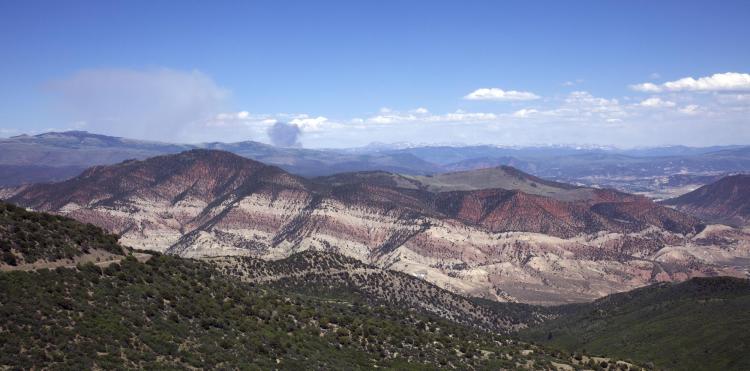Smoke season is replacing the monsoon season
My trip was to be three nights long, combining camping and photography, and I longed for clear air and skies for photography of the Milky Way. But I was beleaguered by smoke.
I started at the Railroad Bridge Campground on the Arkansas River near Buena Vista, but as night approached the smoke from the 416 fire near Durango turned the blue sky a reddish grey. I packed up and went to the White River Plateau, and within hours of arriving I watched a plume of smoke 15 miles to the east as the Bocco fire started. I could not escape the smoke.
In my mind, “smoke season” has replaced the monsoon season in the Southwest. Is that just negativity from a frustrated curmudgeon, or is my perception accurate? If smoke is increasing, what are the causes?
The causes of fires are controversial, with some people focusing on land management while others focus on weather and climate change. Within the umbrella of land management comes human behavior, and no one can doubt that as more and more people live in the forest and camp in the mountains that careless behavior becomes more frequent.

The first plume of the Bocco Fire rises to foul the air. Photo by Jeff Mitton.
For example, irresponsible campers set the Cold Springs Fire in Nederland in 2016, and this week authorities are searching for three men seen fleeing a target shooting area where the Bocco Fire started. People started most of the fires in California in recent years, but in other western states the majority of fires are still set by lightning. The remainder of this column focuses on influence of weather and climate change on the fire season.
A study covering fire cycles over the last 3,000 years concluded that climate and weather drove fire cycles. As expected, fires were more common during warm periods and especially in warm droughts. But these drivers became less efficient in the late 1800s as railroads spread across the west and steam driven locomotives spewed hot cinders into the air, sparking numerous fires.
Some people assert that the Durango to Silverton steam engine set the 415 just north of Durango; that historic steam locomotive is being replaced with a diesel locomotive.
Studies examining recent fire seasons indicate that the number, size, and intensity of fires have increased within the last few decades. For example, in an analysis of the acreage consumed in western states from 1960 to 2017, the eight years with by far the greatest acreage burned all occurred between 2004 and the present. This study concludes that a trend of greater acreage consumed began in 1983. Prior to 1983, the average number of acres burned was 3.5 million, while the mean after 1983 was 5.5 million.
A study of wildfires between 1970 and 2003 found clear trends, and it also identified the factors that triggered severe fire seasons. This study focused on large wildfires, defined as greater than 400 hectares (988 acres), and it included 1,166 fires in the western states.
A graph of the fire seasons revealed that the number of large fires increased in the 1980s, with an average of four times as many fires in recent years as seen from 1970 to 1986. Recent fires are not only more frequent, they average six times as large as the fires between 1970 and 1986.
The study of large fires also revealed why fire seasons vary so much from year to year. Years with the highest temperatures have the worst fire seasons. So this trend, seen over the last 3,000 years, is still prevalent. But the study also discovered a characteristic that triggers very hot summers—most, but not all, of the notably hot summers had very early snow melts.
I looked at the data and found that the fire seasons with the largest numbers of large fires were 1987, 1988, 1989, 1994, 2000, 2002 and 2003 (regrettably, 2003 was the last year in the data set). Every one of these years was exceptionally warm and five of the seven had very early springs.
Perhaps the clearest signals of climate change are earlier spring runoff, earlier spring seasons and longer growing seasons. If a longer summer is not rescued by increased precipitation, soils become dry and forests become drought stressed. An early spring plus a warmer summer produces a long fire season with many large fires.
The curmudgeon was right. We now have “smoke season” which is largely coincident with summer and at least partially a product of the earlier springs and warmer summers created by climate change.

